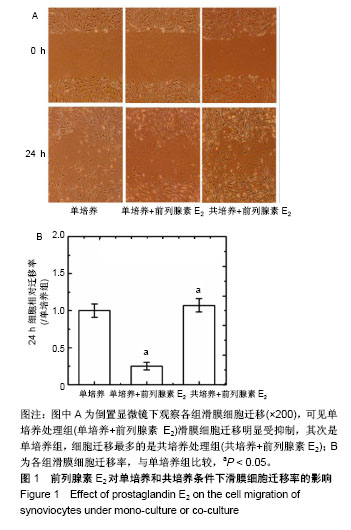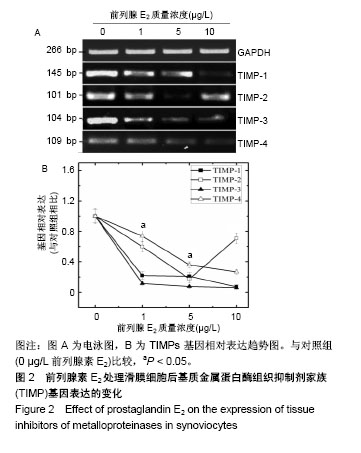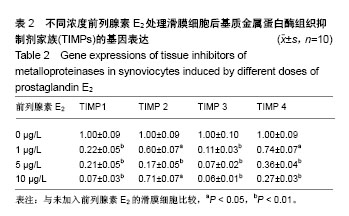| [1] Ng WH, Griffith JF, Hung EH, et al. Imaging of the anterior cruciate ligament. World J Orthop. 2011;2(8):75-84. [2] Stein V, Li L, Lo G, et al. Pattern of joint damage in persons with knee osteoarthritis and concomitant ACL tears. Rheumatol Int. 2012;32(5):1197-1208. [3] McLean SG, Mallett KF, Arruda EM. Deconstructing the anterior cruciate ligament: what we know and do not know about function, material properties, and injury mechanics. J Biomech Eng. 2015;137(2):020906. [4] Spindler KP, Murray MM, Detwiler KB, et al. The biomechanical response to doses of TGF-beta 2 in the healing rabbit medial collateral ligament. J Orthop Res. 2003;21(2):245-249. [5] Cuellar VG, Cuellar JM, Golish SR, et al. Cytokine profiling in acute anterior cruciate ligament injury. Arthroscopy. 2010; 26(10):1296-1301. [6] Xie J, Jiang J, Zhang Y, et al. Up-regulation expressions of lysyl oxidase family in Anterior Cruciate Ligament and Medial Collateral Ligament fibroblasts induced by Transforming Growth Factor-Beta 1. Int Orthop. 2012;36(1):207-213. [7] Kojima F, Kato S, Kawai S. Prostaglandin E synthase in the pathophysiology of arthritis. Fundam Clin Pharmacol. 2005; 19(3):255-261. [8] Wang P, You X, Yan Y, et al. Cyclic mechanical stretch downregulates IL-1β-induced COX-2 expression and PGE(2) production in rheumatoid arthritis fibroblast-like synoviocytes. Connect Tissue Res. 2011;52(3):190-197. [9] Tsuzaki M, Guyton G, Garrett W, et al. IL-1 beta induces COX2, MMP-1, -3 and -13, ADAMTS-4, IL-1 beta and IL-6 in human tendon cells. J Orthop Res. 2003;21(2):256-264. [10] Xie J, Zhang Q, Zhu T, et al. Substrate stiffness-regulated matrix metalloproteinase output in myocardial cells and cardiac fibroblasts: Implications for myocardial fibrosis. Acta Biomater. 2014;10(6):2463-2472. [11] Xue R, Yang L, Tang Z, et al. The profile of MMP and TIMP in injured rat ACL. Mol Cell Biomech. 2010;7(2):115-124. [12] Tang Z, Yang L, Xue R, et al. Differential expression of matrix metalloproteinases and tissue inhibitors of metalloproteinases in anterior cruciate ligament and medial collateral ligament fibroblasts after a mechanical injury: Involvement of the p65 subunit of NF-kB. Wound Repair Regen. 2009;17(5):709-716. [13] Edwards DR, Beaudry PP, Laing TD, et al. The roles of tissue inhibitors of metalloproteinases in tissue remodelling and cell growth. Int J Obes Relat Metab Disord. 1996;20 Suppl 3:S9-15. [14] Bramono DS, Richmond JC, Weitzel PP, et al. Matrix metalloproteinases and their clinical applications in orthopaedics. Clin Orthop Relat Res. 2004;(428):272-285. [15] Cawston TE, Wilson AJ. Understanding the role of tissue degrading enzymes and their inhibitors in development and disease. Best Pract Res Clin Rheumatol. 2006;20(5):983-1002. [16] Xie J, Wang CL, Yang W, et al. Modulation of MMP-2 and MMP-9 through connected pathways and growth factors is critical for extracellular matrix balance of intra-articular ligaments. J Tissue Eng Regen Med. 2018;12:e550-e565. [17] Wang C, Xu C, Chen R, et al. Different expression profiles of the lysyl oxidases and matrix metalloproteinases in human ACL fibroblasts after co-culture with synovial cells. Connect Tissue Res. 2018,12:1-12. [18] Yan Y, Singh GK, Zhang F, et al. Comparative study of normal and rheumatoid arthritis fibroblast-like synoviocytes proliferation under cyclic mechanical stretch: role of prostaglandin E2. Connect Tissue Res. 2012;53(3):246-254. [19] Spector JA, Greenwald JA, Warren SM, et al. Co-culture of osteoblasts with immature dural cells causes an increased rate and degree of osteoblast differentiation. Plast Reconstr Surg. 2002;109(2):631-642. [20] Wang Y, Tang Z, Xue R, et al. Differential response to CoCl2-stimulated hypoxia on HIF-1α, VEGF, and MMP-2 expression in ligament cells. Mol Cell Biochem. 2012;360(1-2): 35-242. [21] Mullen L, Adams G, Foster J, et al. A comparative study of matrix metalloproteinase and aggrecanase mediated release of latent cytokines at arthritic joints. Ann Rheum Dis. 2014;73(9): 728-1736. [22] 黄长明.影响关节镜下前交叉韧带重建手术疗效的相关因素[J].中国矫形外科杂志,2010,18(20):1707-1710.[23] Ireland ML, Willson JD, Ballantyne BT, et al. Hip strength in females with and without patellofemoral pain. J Orthop Sports Phys Ther. 2003;33(11):671-676. [24] Rieder F, Brenmoehl J, Leeb S, et al. Wound healing and fibrosis in intestinal disease. Gut. 2007;56(1):130-139. [25] Brenmoehl J, Miller SN, Hofmann C, et al. Transforming growth factor-beta 1 induces intestinal myofibroblast differentiation and modulates their migration. World J Gastroenterol. 2009;15(12): 431-1442. [26] Goncharova EA, Billington CK, Irani C, et al. Cyclic AMP-mobilizing agents and glucocorticoids modulate human smooth muscle cell migration. Am J Resp Cell Mol Biol. 2003; 9(1):9-27. [27] Rieder F, Georgieva M, Schirbel A, et al. Prostaglandin E2 inhibits migration of colonic lamina propria fibroblasts. Inflamm Bowel Dis. 2010;16(9):1505-1513. [28] 陈荣富,王春莉,谢静,黄伟,梁熙,宋国立,符纯锋,陈诚.前列腺素E2干预后交叉韧带成纤维细胞和滑膜细胞的迁移[J].中国组织工程研究,2012,16(28):5160-5164.[29] Xie J, Jiang J, Huang W, et al. TNF-α induced down-regulation of lysyl oxidase family in anterior cruciate ligament and medial collateral ligament fibroblasts. Knee. 2014;21(1):47-53. [30] 蔡林奕,孔祥丽,谢强,谢静.NF-κB通路在TNF-α调控软骨细胞MMPs/TIMPs比例中的作用研究[J].四川大学学报(医学版), 2016,47(05):642-648.[31] Zhang YJ, Huang W, Jiang JH, et al. Influence of TNF-α and biomechanical stress on matrix metalloproteinases and lysyl oxidases expressions in human knee synovial fibroblasts. Knee Surg Sports Traumatol Arthrosc. 2014;22(9):1997-2006. [32] Wang C, Xie J, Jiang J, et al. Differential expressions of the lysyl oxidase family and matrix metalloproteinases-1, 2, 3 in posterior cruciate ligament fibroblasts after being co-cultured with synovial cells. Int Orthop. 2015;39(1):183-191. [33] Alameddine HS, Morgan JE. Matrix metalloproteinases and tissue inhibitor of metalloproteinases in inflammation and fibrosis of skeletal muscles. J Neuromuscul Dis. 2016;3(4): 55-473. [34] de Bruyn M, Vandooren J, Ugarte-Berzal E, et al. The molecular biology of matrix metalloproteinases and tissue inhibitors of metalloproteinases in inflammatory bowel diseases. Crit Rev Biochem Mol Biol. 2016;51(5):295-358. [35] Melendez-Zajgla J, Del Pozo L, Ceballos G, et al. Tissue inhibitor of metalloproteinases-4. The road less traveled. Mol Cancer. 2008;7:85. |
.jpg)




.jpg)
.jpg)